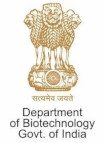Making NSC and Neurons from Patient-Derived Tissue Samples.
| Title | Making NSC and Neurons from Patient-Derived Tissue Samples. |
| Publication Type | Journal Article |
| Year of Publication | 2019 |
| Authors | Mukherjee O, Acharya S, Rao M |
| Journal | Methods Mol Biol |
| Volume | 1919 |
| Pagination | 9-24 |
| Date Published | 2019 |
| ISSN | 1940-6029 |
| Abstract | The human brain and mechanisms underlying its functioning has been a field of intense research due to its complexity, inaccessibility, and the large numbers of debilitating disorders affecting this organ. Model organisms have provided great insight into the functioning of the mammalian brain; however, there exist many features unique to humans which need detailed understanding. In this context, human pluripotent stem cells (HPSCs) have emerged as a promising resource.In the developing brain, cortical diversification is achieved by neural stem cells/neural progenitor cells (NSCs/NPCs) by altering its potency (from multipotent to unipotent) and differentiation capacity (from neurogenesis to gliogenesis). Recent development in tissue reprogramming allows for derivation of NSCs/NPCs from either healthy control subjects manipulated to carry disease mutations or affected individuals carrying specific disease-causing mutations allowing for detailed evaluation of cellular phenotype, pharmacological manipulation, and/or toxicological screening.In this chapter, we will discuss HPSC differentiation into neural stem cells (NSCs) and neurons. We will review the mechanism underlying in vivo neural differentiation and methods which recapitulate this in vitro. We describe a method of deriving NSCs and differentiated mature neurons highlighting key steps of the core protocol. We also provide detailed information of the transcription factor and morphogen map of the developing brain which can be used as a guide to derive region- and lineage-specific NSCs and differentiated neurons. |
| DOI | 10.1007/978-1-4939-9007-8_2 |
| Alternate Journal | Methods Mol. Biol. |
| PubMed ID | 30656618 |

